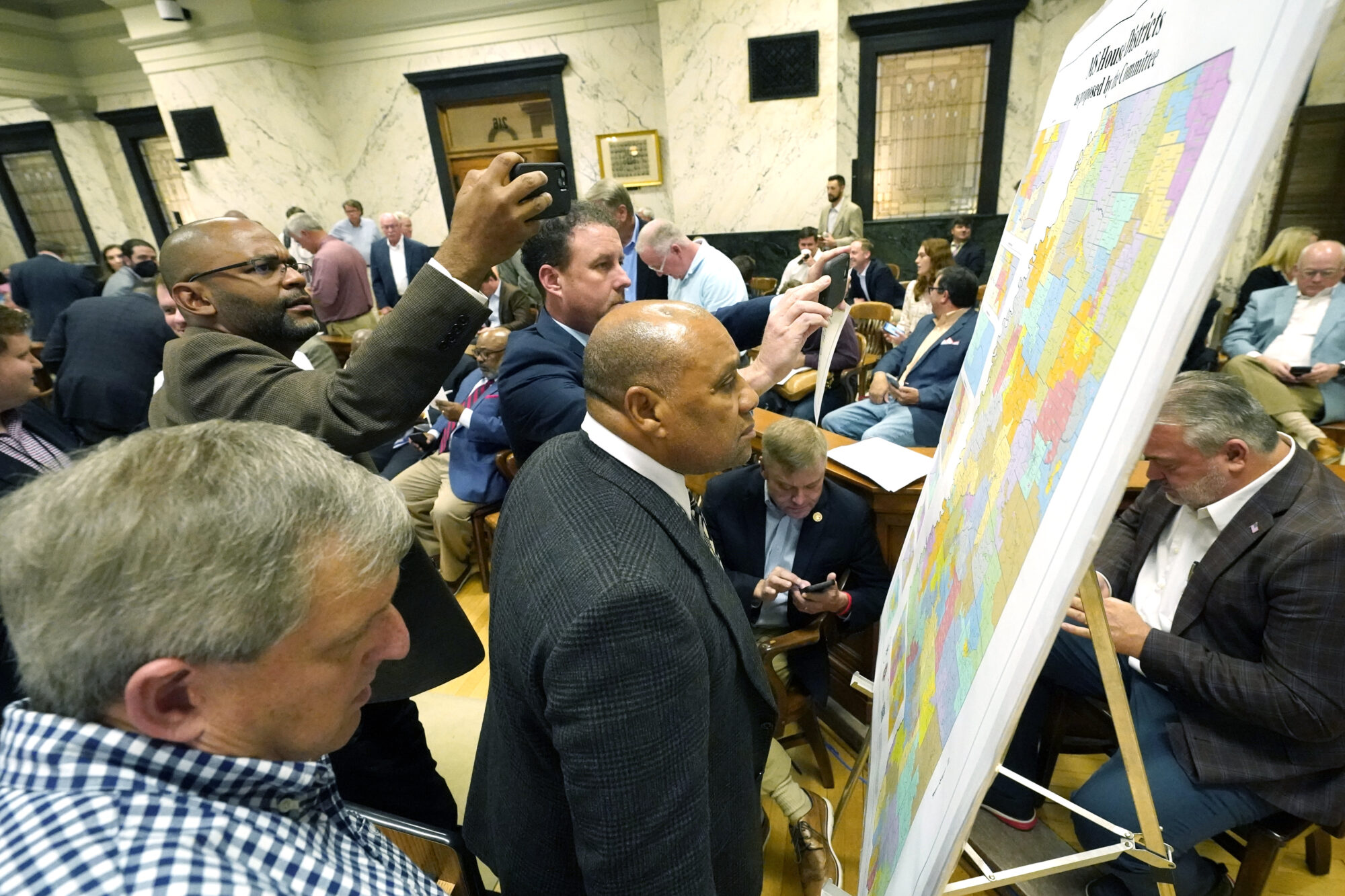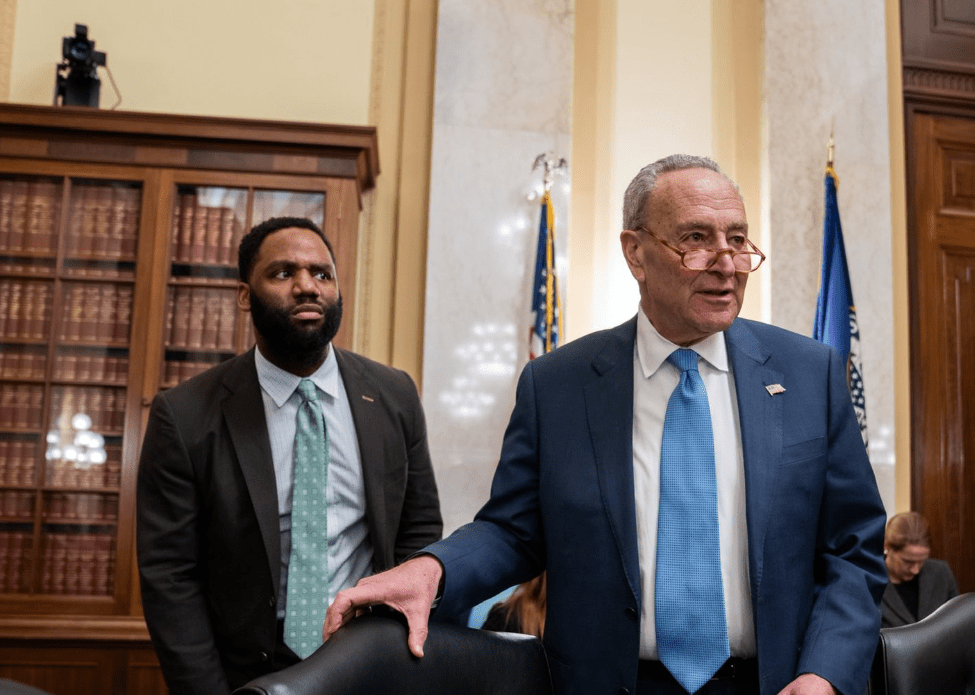
Lawmakers from both chambers review the House redistricting map following a meeting of the House Legislative Reapportionment Committee, Sunday, March 27, 2022, at the Mississippi Capitol in Jackson. (AP Photo/Rogelio V. Solis)
The most recent federal court ruling ordering Mississippi to make changes in state legislative districts based on federal Voting Rights Act violations isn’t your grandfather’s federal court order on legislative redistricting or even your father’s. The new voting rights ruling in the case Mississippi State Conference of the NAACP, et al, v. State Board of Election Commissioners, et al, differs.
Historically, Voting Rights Act cases in Mississippi and much of the rest of the South were dependent on the concept of “federal preclearance” of proposed election changes – changes like the creating new boundaries in state legislative districts – that required prior approval from the U.S. Justice Department before they could be enacted in states “with a history of racial discrimination in voting.”
The Legal Groundwork: An Overview of the Voting Rights Act Violations in Mississippi
In 2013, the Supreme Court ruled in Shelby County, Alabama v. Holder that Sections 4 and 5 of the 1965 Voting Rights Act were being unconstitutionally applied in nine states including Mississippi.
Adopted by Congress during the height of the American civil rights struggle, Section 5 of the VRA identified states and localities with a history of race-based voter discrimination and mandated that those “covered jurisdictions” obtain federal approval or “preclearance” from the U.S. Justice Department before making changes to any state or local voting laws or voting districts. The process significantly slowed the process of state and federal legislative redistricting in those states.
But the 2013 high court ruling lifted that preclearance provision and tossed Mississippi redistricting or voting rights disputes directly into the courts like the rest of the country. From a rhetorical standpoint, Southern politicians would rail against the “liberal Justice Department” or “liberal judges” when Mississippi laws or district lines would be ruled in violation of the VRA, but preclearance was no longer an obstacle.
The 2024 court order doesn’t remotely fit that narrative despite reaffirming the state’s clear history of discrimination in voting rights. First of all, the ruling came down from a three-judge federal panel of white Mississippi jurists consisting of 5th U.S. Circuit Court of Appeals Judge Leslie Southwick, U.S. Chief District Judge Daniel Jordan and U.S. District Judge Sul Ozerden – all of whom were appointed to the federal bench by former Republican President George W. Bush over 15 years ago.
A New Era in Redistricting: How This Ruling Changes the Game
Unlike legislative redistricting disputes in the past, this ruling didn’t toss the entire redistricting plan for the Mississippi Legislature out the judicial window. The ruling is limited in scope to a handful of legislative districts and expressly offers the Legislature the opportunity to provide legal remedies to what the judges identified as an unconstitutional dilution of Black voting strength in three geographic areas of the state.
The ruling requires the creation of new Black-majority state Senate districts in the areas around DeSoto County in Northern Mississippi and in and around the city of Hattiesburg and a new Black-majority state House district in Chickasaw and Monroe counties.
Sounds clear enough, but the fact is that when the lines in one legislative district are adjusted it impacts all the contiguous districts. As the voluminous judicial ruling indicates, legislative redistricting is a complex exercise.
The language of the Mississippi legislative redistricting case reflects similar federal court intervention in both congressional and legislative redistricting litigation in Louisiana and Georgia in which the court allowed state officials to craft their legal remedies for prior maps that diluted Black voting strength. In Louisiana, state officials created a second black-majority congressional district.
In Georgia, a federal judge approved a solution that resulted in the creation of new Black-majority districts but also accepted district lines that protected Republican partisan advantages.
Each Mississippi State Senate district has about 56,998 residents while each Mississippi State House district is comprised of 24,294 residents. In the 2022 legislative redistricting plan that was the target of the lawsuit, 15 (29%) of the state’s 52 state Senate districts were Black majority while 42 (34%) of the 122 state House districts were Black majority.
Mississippi’s population is currently about 59% white and 38% Black.








